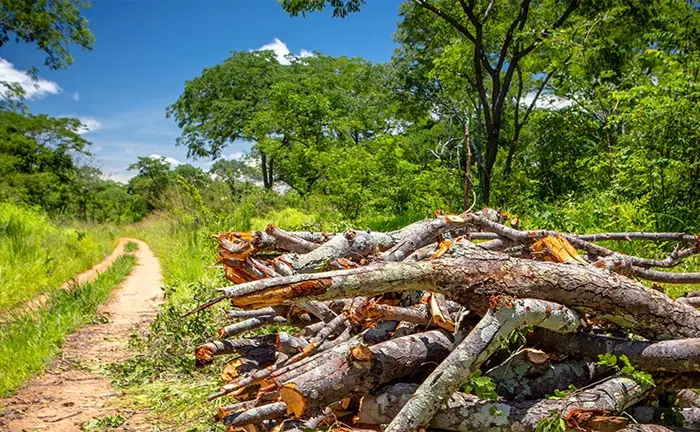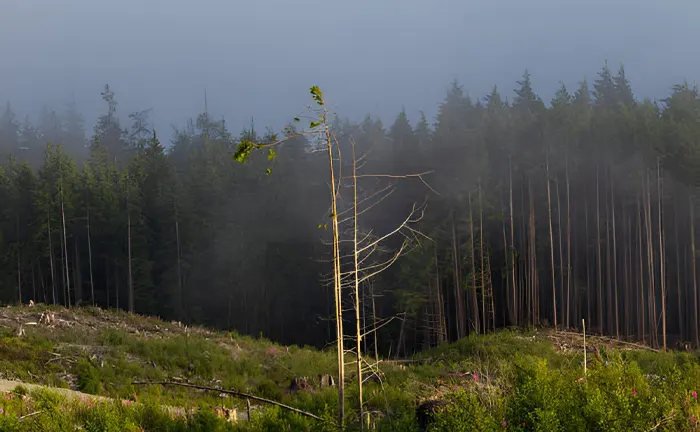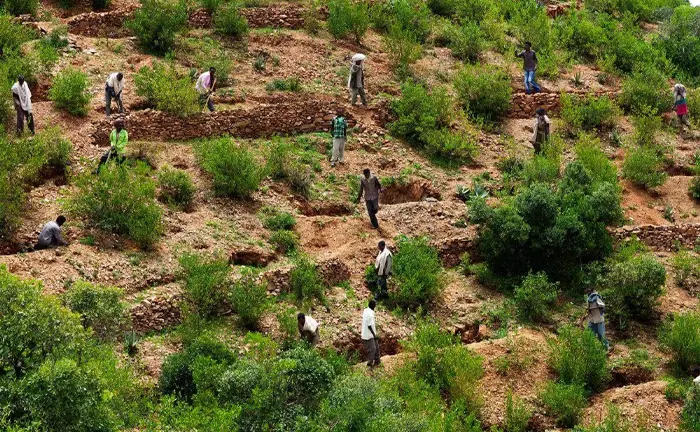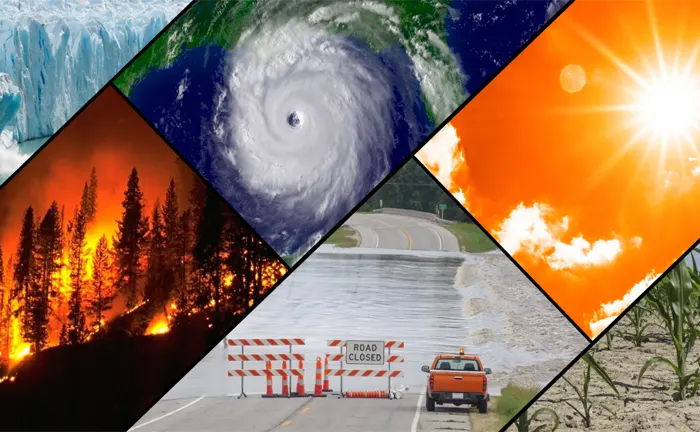Roles of Forest Management in Climate Change Mitigation
- September 24, 2024
- 0 comment
Forests play a pivotal role in the Earth’s carbon cycle, serving as significant carbon sinks that help regulate atmospheric carbon dioxide levels. As climate change accelerates due to human activities, the management of forests has become a crucial element in global strategies to mitigate climate impacts.

Understanding the roles of forest management in climate change mitigation involves exploring a variety of strategies that enhance carbon sequestration, preserve biodiversity, and maintain ecological balance. This comprehensive delves into the multifaceted approaches of forest management, highlighting their importance and effectiveness in addressing climate change.
Table of Contents:
- Final Concluding Thoughts
- Frequently Asked Questions
- Carbon Sequestration
- Biodiversity Preservation
- Soil and Water Conservation
- Sustainable Resource Use
The Importance of Forests in Climate Change Mitigation
Forests cover approximately 31% of the global land area and are integral to the Earth’s environmental health. They absorb about 2.4 billion metric tons of carbon dioxide annually, which is about one-third of the carbon dioxide released from burning fossil fuels. The capacity of forests to act as carbon sinks underscores their importance in mitigating climate change. Effective forest management can enhance this natural function, making it a cornerstone in efforts to curb global warming.

The article begins by establishing the crucial connection between forests and climate change. Forests act as carbon sinks, absorbing a significant amount of CO2 from the atmosphere. This natural process is vital for regulating the Earth’s climate, as it helps to balance the levels of carbon dioxide, a major greenhouse gas.
However, the article highlights that this delicate balance is increasingly threatened by deforestation and poor forest management practices. When forests are cleared or degraded, not only is their carbon-sequestering capability reduced, but the carbon stored in trees and soil is also released back into the atmosphere, exacerbating global warming.

Moreover, the article underscores that deforestation is responsible for approximately 10-15% of global greenhouse gas emissions. Poor management practices, such as unsustainable logging and land conversion for agriculture, contribute significantly to this problem. The article argues that through proper forest management, we can enhance the capacity of forests to sequester carbon, thus playing a pivotal role in climate change mitigation.
Effective management strategies, including reforestation, afforestation, and sustainable logging, can maintain and even increase the carbon storage potential of forests. By implementing these practices, we can help offset emissions from other sectors and move towards a more sustainable and climate-resilient future.
1. Carbon Sequestration and Forest Management
Insight of Carbon Sequestration: Carbon sequestration refers to the process by which forests capture and store atmospheric carbon dioxide. Trees absorb carbon dioxide during photosynthesis and store it as biomass in their trunks, branches, leaves, and roots. This stored carbon remains in the forest ecosystem, reducing the amount of carbon in the atmosphere.

Enhancing Carbon Sequestration Through Management
Forest management practices can enhance carbon sequestration in several ways:
- Afforestation and Reforestation: Planting new forests (afforestation) and restoring degraded ones (reforestation) increase forest cover, thereby enhancing carbon capture.
- Selective Logging: Implementing selective logging practices minimizes the impact on the forest ecosystem, preserving larger areas of trees that continue to sequester carbon.
- Agroforestry: Integrating trees with agricultural practices can increase carbon storage on agricultural lands while providing additional economic benefits.
- Improved Forest Management (IFM): Techniques like thinning, which reduces competition among trees, can promote healthier growth and increase carbon uptake.
2. Preserving Biodiversity Through Forest Management
Biodiversity and Ecosystem Services: Forests are home to 80% of the world’s terrestrial biodiversity. This biodiversity is crucial for ecosystem resilience and the provision of ecosystem services, such as clean air, water purification, and soil stabilization. Biodiverse forests are more resilient to disturbances and better able to adapt to climate change.

Strategies for Biodiversity Preservation
Effective forest management can preserve and enhance biodiversity through:
- Protected Areas: Establishing protected areas within forests can safeguard critical habitats and species from human disturbance.
- Wildlife Corridors: Creating corridors that connect fragmented habitats allows for species migration and genetic exchange, enhancing ecosystem resilience.
- Sustainable Harvesting: Implementing sustainable logging practices ensures that forest resources are used responsibly, preserving habitats for future generations.
3. Addressing Climate Change Through Sustainable Forestry Practices
Sustainable Forestry Defined: Sustainable forestry involves managing forest resources to meet the needs of the present without compromising the ability of future generations to meet their own needs. It balances environmental, economic, and social objectives, ensuring that forest ecosystems remain healthy and productive.

Key Practices in Sustainable Forestry
- Reduced Impact Logging (RIL): This practice minimizes the ecological footprint of logging operations by using techniques that reduce damage to surrounding trees and soil.
- Certification Programs: Forest certification programs, such as the Forest Stewardship Council (FSC), promote responsible forest management by setting standards for sustainability.
- Community-Based Forest Management: Involving local communities in forest management decisions can lead to more effective and culturally appropriate conservation efforts.
4. Mitigating Climate Change Through Forest Restoration
The Role of Forest Restoration: Forest restoration involves repairing degraded forest ecosystems to restore their ecological functionality and enhance their capacity to sequester carbon. Restoration efforts can reverse deforestation and degradation trends, contributing to climate change mitigation.

Approaches to Forest Restoration
- Natural Regeneration: Allowing forests to regenerate naturally can be a cost-effective and efficient restoration method, especially in areas with resilient ecosystems.
- Assisted Regeneration: In areas where natural regeneration is not feasible, assisted techniques such as planting native species can accelerate recovery.
- Soil Restoration: Enhancing soil health through techniques like mulching and planting cover crops can improve forest productivity and carbon storage capacity.
The Role of Forest Management in Adaptation and Resilience
Building Resilient Forests: In addition to mitigation, forest management plays a critical role in adaptation by building resilience against climate change impacts such as increased temperatures, altered precipitation patterns, and extreme weather events.

Adaptive Management Strategies
- Diversifying Species Composition: Planting a variety of tree species can enhance forest resilience by reducing susceptibility to pests, diseases, and climate variability.
- Monitoring and Research: Continuous monitoring and research can inform adaptive management strategies, ensuring that forests can respond to changing conditions.
- Fire Management: Implementing controlled burns and reducing fuel loads can decrease the risk of catastrophic wildfires, which release significant amounts of carbon dioxide.
Challenges and Opportunities in Forest Management
Challenges in Implementing Effective Forest Management
- Deforestation and Land Use Change: The conversion of forests to agricultural and urban areas poses a significant challenge to forest management efforts.
- Economic Pressures: Balancing economic development with conservation goals can be difficult, especially in regions where forests provide livelihoods.
- Policy and Governance: Effective forest management requires robust policies and governance structures that support sustainable practices and enforce regulations.
Opportunities for Improvement
- Technological Advancements: Innovations in remote sensing, satellite imagery, and data analytics can enhance forest monitoring and management.
- International Cooperation: Global partnerships and agreements, such as the United Nations REDD+ program, can support forest conservation efforts in developing countries.
- Public Awareness and Education: Increasing public awareness about the importance of forests in climate change mitigation can drive demand for sustainable products and practices.
Case Studies: Successful Forest Management Initiatives
- Costa Rica’s Forest Conservation Model: Costa Rica has implemented successful policies to reverse deforestation and promote sustainable forest management. By investing in ecotourism and payment for ecosystem services, the country has increased forest cover while supporting local economies.
- The Amazon Rainforest and REDD+: The REDD+ (Reducing Emissions from Deforestation and Forest Degradation) program in the Amazon rainforest aims to reduce deforestation and enhance carbon stocks through financial incentives and sustainable management practices.
The Future of Forest Management in Climate Change Mitigation
Innovations and Emerging Trends
- Carbon Markets: Carbon trading systems that incentivize forest conservation and reforestation projects are emerging as tools for climate change mitigation.
- Agroforestry Innovations: New agroforestry models integrate trees with crops and livestock, enhancing carbon sequestration and agricultural productivity.
- Restoration Ecology: Advances in restoration ecology provide new techniques for repairing degraded ecosystems and improving forest health.
The Road Ahead
Effective forest management will continue to be a critical component of climate change mitigation strategies. By enhancing carbon sequestration, preserving biodiversity, and promoting sustainable practices, forest management can contribute to a more sustainable and resilient future. Continued research, innovation, and collaboration will be essential to overcoming challenges and maximizing the potential of forests as natural solutions to climate change.
Final Conclusion
Forests are invaluable allies in the fight against climate change. Through thoughtful and strategic management, we can harness their potential to mitigate climate impacts and safeguard biodiversity. The roles of forest management in climate change mitigation are diverse and dynamic, offering a range of solutions that can be tailored to different ecosystems and communities. As we navigate the complexities of climate change, embracing and enhancing these natural solutions will be key to achieving a sustainable and resilient future.
Frequently Asked Questions (FAQs)
- What is carbon sequestration, and why is it important for climate change mitigation?
Carbon sequestration is the process by which forests capture and store atmospheric carbon dioxide, reducing the amount of carbon in the atmosphere. This is important for climate change mitigation because it helps to balance greenhouse gas emissions, which are a primary driver of global warming. - How does biodiversity contribute to forest resilience?
Biodiversity enhances forest resilience by providing a variety of species that can adapt to changing conditions and disturbances. A diverse ecosystem is more robust and can recover more quickly from events such as pest outbreaks, diseases, and climate variability. - What are some challenges faced by forest management in mitigating climate change?
Challenges include deforestation, economic pressures, and the need for effective policy and governance. Balancing conservation with development and addressing illegal logging are also significant hurdles. - How can technology aid in forest management and climate change mitigation?
Technological advancements such as remote sensing, satellite imagery, and data analytics can improve forest monitoring and management, enabling better decision-making and conservation strategies. - What role does international cooperation play in forest management?
International cooperation, through programs like REDD+, supports forest conservation efforts by providing financial incentives and fostering partnerships between countries to address deforestation and promote sustainable management. - What are the benefits of agroforestry in climate change mitigation?
Agroforestry integrates trees with agriculture, enhancing carbon sequestration and improving soil health while providing economic benefits to farmers. This practice can increase biodiversity and resilience to climate change impacts.
We trust this guide has helped you understand the essential roles forest management plays in mitigating climate change, highlighting key strategies and practices. Have you tried any of the methods we’ve covered or have advice on improving forest conservation? Share your experiences and join the discussion below. Your contributions can assist others in making informed choices and guide future conversations. Be sure to share this article with fellow environmental advocates and professionals committed to creating a sustainable future!

Edward Smith
Forestry AuthorWoodworking is about more than crafting; it's a harmonious connection with nature, mastering tools, and preserving our environment. I'm here to share my knowledge and experiences with you, forging a future where we can embrace wood's beauty and utility while safeguarding our forests' health and diversity.






Leave your comment